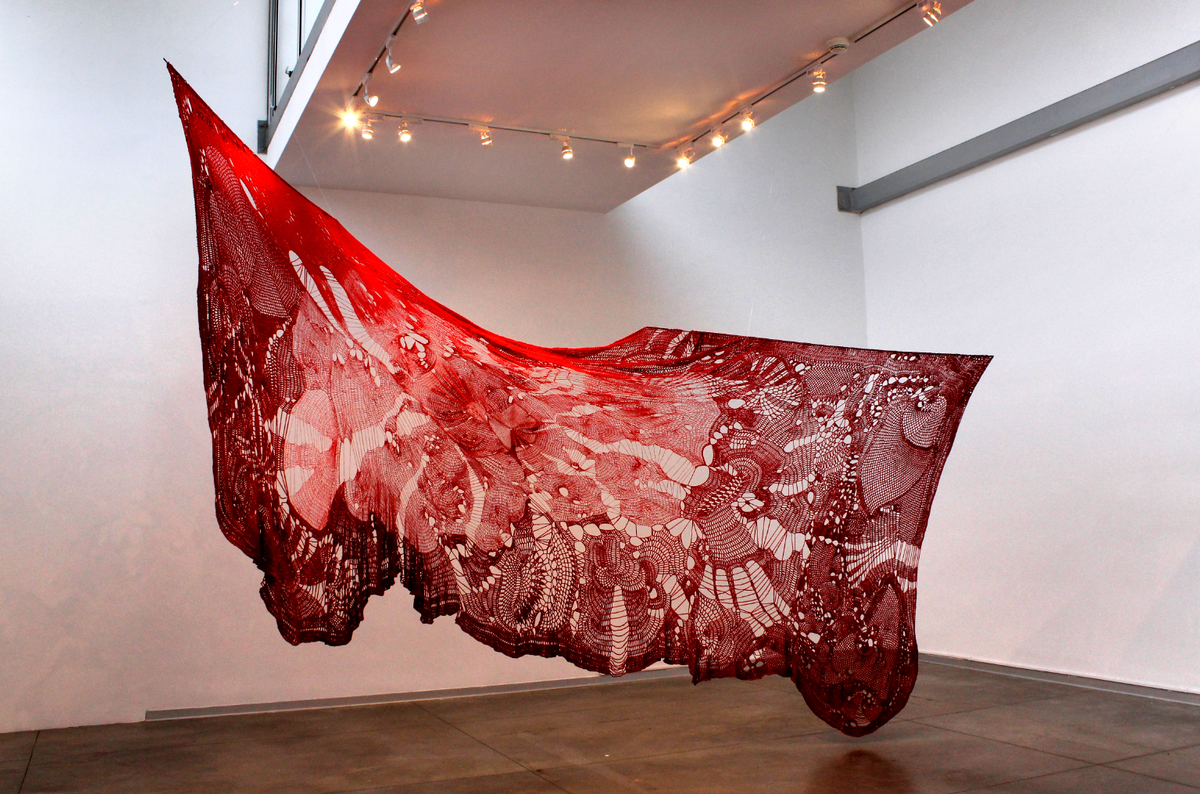A Peruvian artist, who weaves with a native cotton fibre that was outlawed under Spanish colonial rule, is one of 14 artists to benefit from a new partnership between the Sydney Biennale and the Fondation Cartier pour l’art contemporain in Paris.
Cristina Flores Pescorán, who is based in The Hague, uses a Peruvian cotton species called Gossypium barbadense to create her work.
Known for its long, glossy fibres, the plant was a staple of pre-colonial Peruvian society. However, its use was forbidden during colonisation because its natural earth tones were believed to “contaminate” the preferred species of pure white cotton.
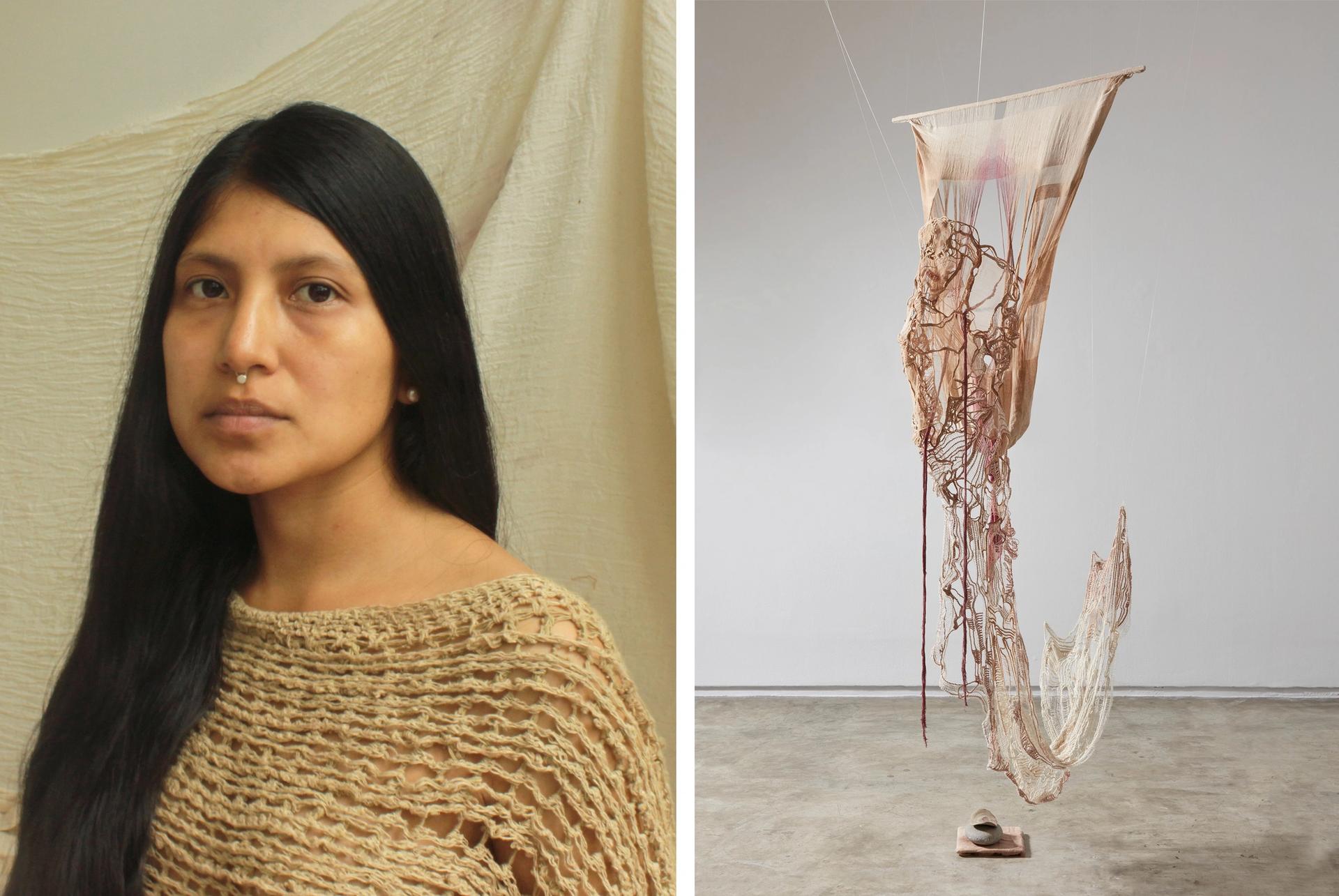
Portrait of Cristina Flores Pescorán, the artist's La Curandera (2020-21)
Portrait: courtesy the artist; work: Juan Pablo Murrugarra. Courtesy of the artist and Ginsberg Galería, Lima
Flores Pescorán uses weaving techniques from the Chancay culture which she learned from specialist artisan Esteban Nazario Redondo.
By favouring the natural beauty of the native cotton, Flores Pescorán told The Art Newspaper, she hopes to connect with a tradition of her ancestors that was “considered dead”.
Fondation Cartier’s partnership with Sydney Biennale began in 2022 with the Australian premiere of The Great Animal Orchestra, a symphony by the pioneering American soundscape ecologist Bernie Krause. The work was shown at the Fondation’s Paris museum in 2016.
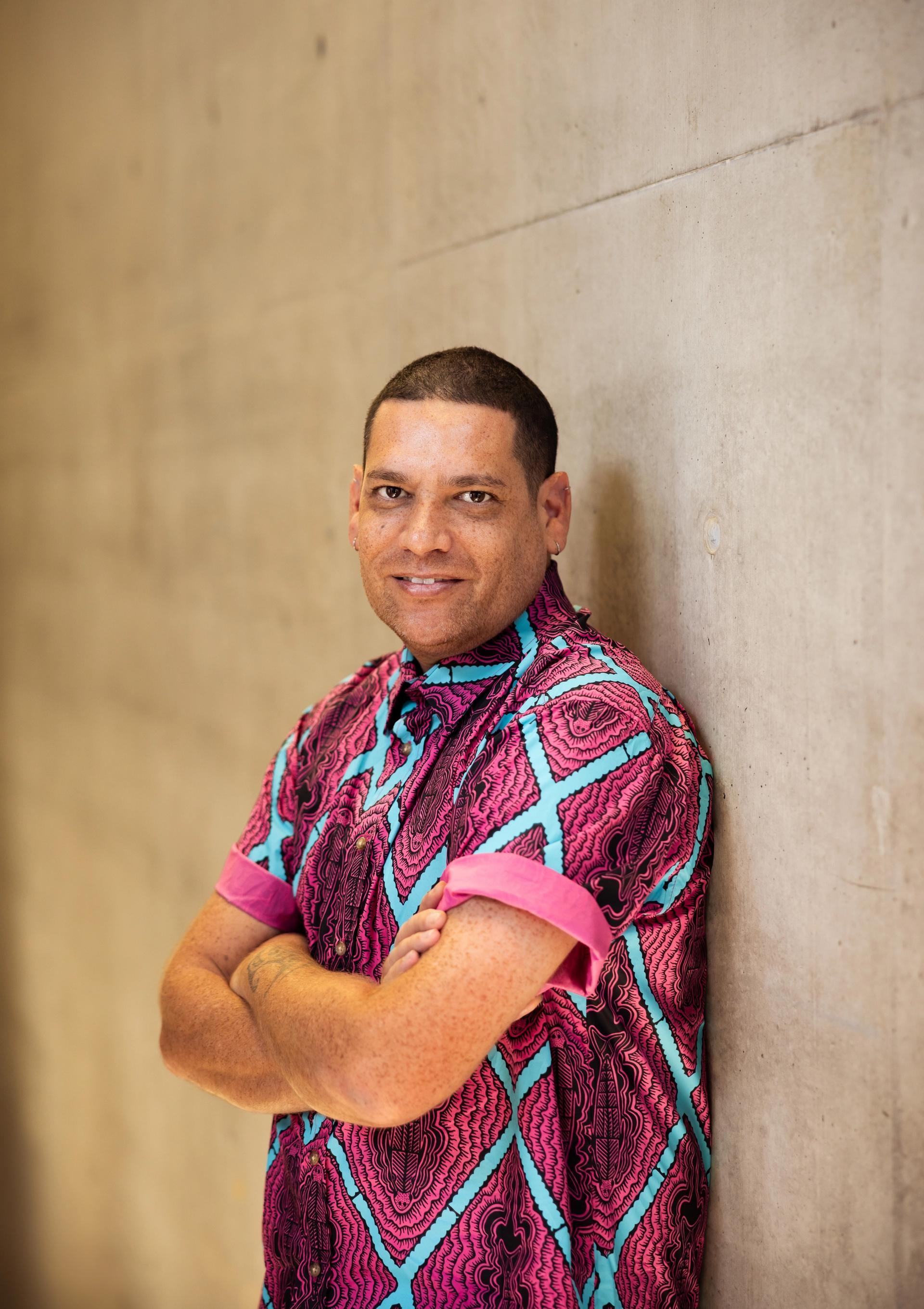
Portrait of Tony Albert
Photo: Daniel Boud
This year’s partnership goes much further. A new role of First Nations curatorial fellow has been created at the Fondation Cartier, and celebrated Australian Indigenous artist Tony Albert was named as its inaugural recipient.
Albert told The Art Newspaper his role is to work closely with 14 artists to realise their works for the Biennale. The 14 artists, who are a selection of a much larger group of indigenous artists in the Biennale, were chosen by Fondation Cartier and the Biennale’s artistic directors, Cosmin Costinaş and Inti Guerrero.
Indeed, the Fondation Cartier is supporting indigenous artists from various world cultures.
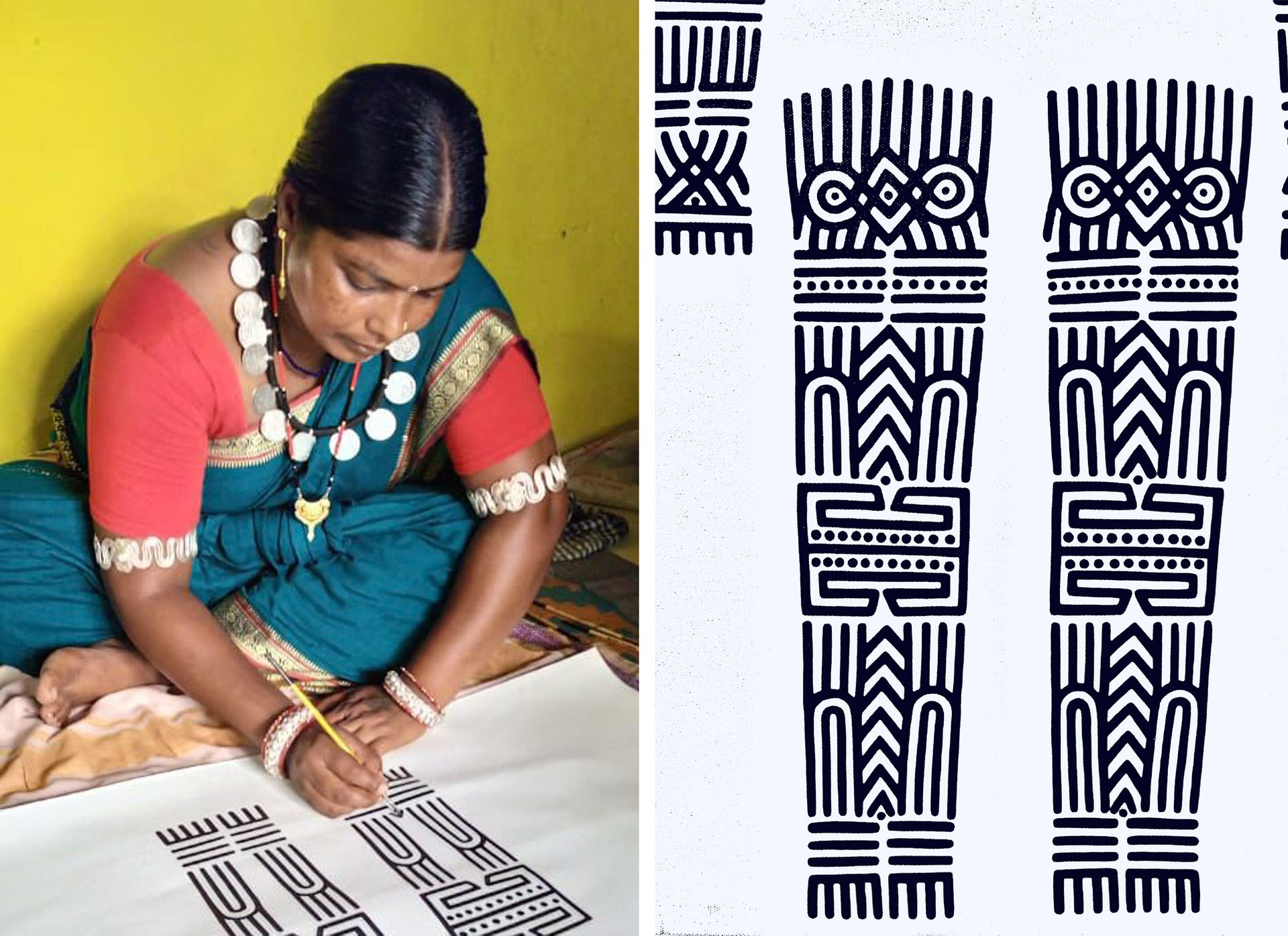
Portrait of Mangala Bai Maravi, the artist's Baiga godna (2019)
Portrait: Amit Sharma, work: courtesy the artist
One of the selected artists is Mangala Bai Maravi, daughter of a Baiga tattoo artist from Lalpur village, Madhya Pradesh, India, translates tribal tattoo designs to paper and canvas.
The first ever all-female group of Guatemalan kite makers, Orquídeas Barrileteras, will exhibit the intricately designed, colourful kites that are flown in celebration of life and death.
The Australian Indigenous artist Kaylene Whiskey, whose paintings are a vibrant mash-up of pop culture icons such as Dolly Parton and Tina Turner alongside elements drawn from traditional Aṉangu culture, has also been selected.
Tony Albert met the entire Fondation Cartier team in Paris last year “which gave a lot of clarity to the work they are doing”.
His main role will be to position the new fellowship for success in future Biennales, although the Fondation has only committed to continuing the initiative for this year’s Biennale and the next.
“There’s so many options: will we grow one of the commissions outside of the Biennale for the Fondation?” Albert said.
“I love that it’s not set in stone. It’s quite fluid in the way in which it could happen, which also is much more in line with Indigenous principles and ways of thinking and working. The outcome might even be based on Country.”
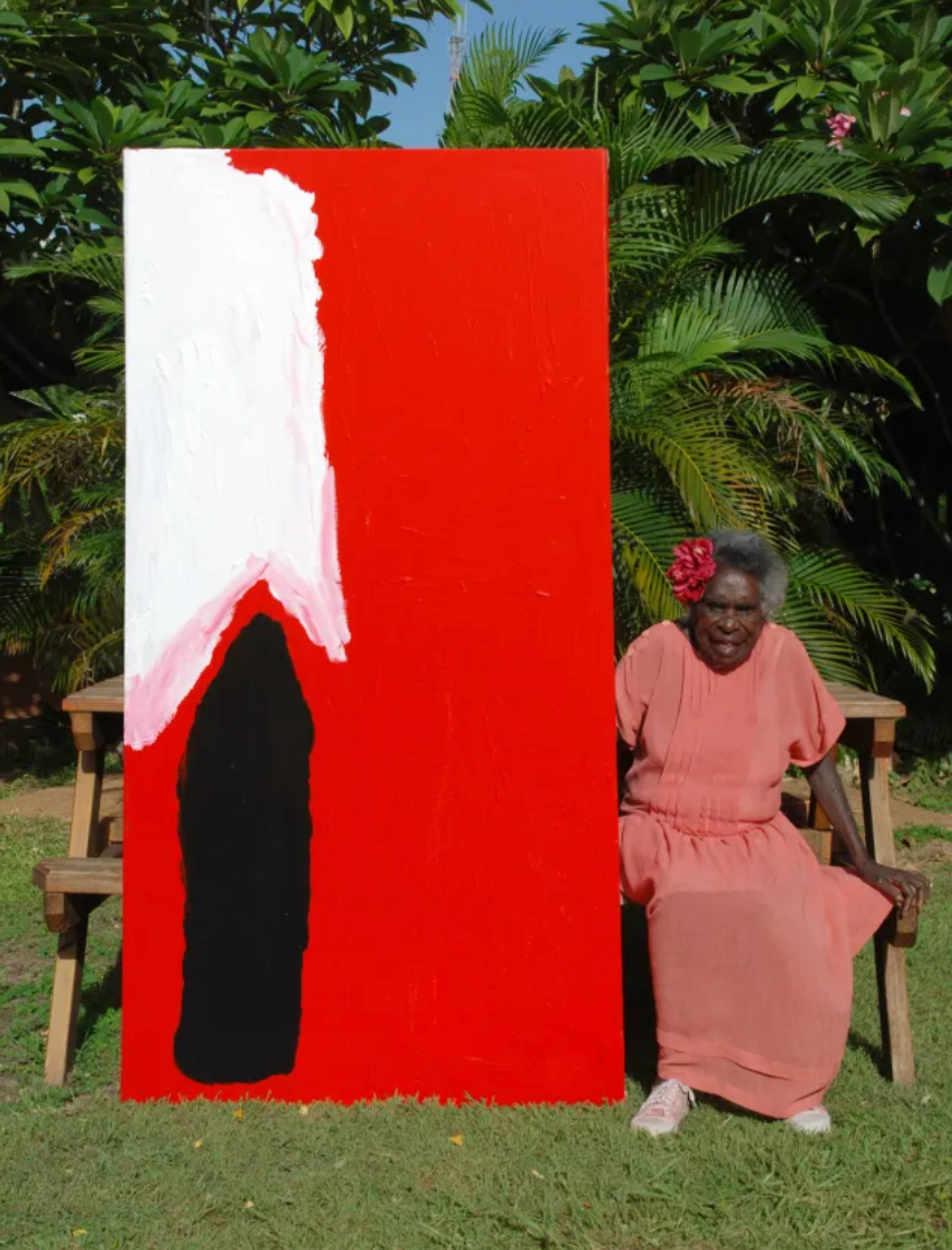
Mirdidingkingathi Juwarnda Sally Gabori with Dibirdibi Country (2009).
Private Collection, Melbourne. Photo: Mornington Island Art, Queensland. © The Estate of Sally Gabori.
Albert said the success of the Mirdidingkingathi Juwarnda Sally Gabori exhibition at the Fondation’s museum in Paris in 2022 had trained the Fondation’s gaze on Australia, a country where it previously had relatively little experience.
He said it was important that Fondation Cartier had made it clear that “the [jewellery] product and the art are not aligned in any given way”.
Hervé Chandès, artistic managing director of the Fondation Cartier pour l’art contemporain, said the partnership with the Sydney Biennale “meaningfully demonstrates a commitment to diversity, inclusivity, artistic innovation and excellence”.
“This partnership reflects our belief in empowering First Nations communities to share their truths and underscores the crucial role of listening to their voices as we navigate the challenges of our planet,” Chandès said.
• Tony Albert, The Garden + Forbidden Fruit, view at Sullivan + Strumpf, Sydney, until 9 March
• Sydney Biennale, 9 March - 10 June


